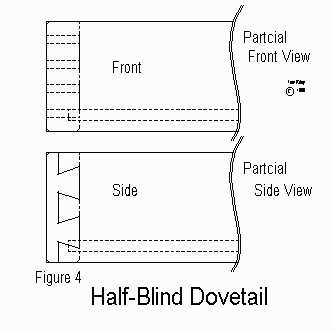LuptonM
Established Member
In the hand tool world, how might one achieve such a thing (ie for drawer bottoms)? Would be easy with a router but I'd rather not use it unless I had to.




nanscombe":8miijqeh said:Makes you wonder how woodworkers managed to produce things, like stopped grooves, before power tools were invented, doesn't it?
Maybe they were just more inventive and / or less lazy.
adidat":3m54co13 said:nanscombe":3m54co13 said:Makes you wonder how woodworkers managed to produce things, like stopped grooves, before power tools were invented, doesn't it?
Maybe they were just more inventive and / or less lazy.
nanscombe see my first post
adidat
Alf":3m54co13 said:It's a bit of a hobby horse of mine, the tendency for folks to try and use hand tools to replicate power tool habits ...
nanscombe":3rbvdikg said:I must admit that before seeing adidat's picture I did think that it sounded like some sort of stretched mortise and, from the looks of it, I wasn't too far wrong.
adidat":38c73nia said:nigel
stretched mortise/stopped groove not much difference. whats your point??
LuptonM":1qkb4rs9 said:The thinking was that, a full length groove would show up in the dovetails ends, right?


'Twas neither - it's a genuine observation. Give two woodworkers the task of producing, say, a jewellery box with dovetailed corners. The router user is going to find it easier to through dovetail in the simplest way, and then use stopped grooves or rebates to take the top and bottom. The hand tool woodworker may rather plough straight through grooves, and elect to mitre the corners of the dovetails to hide them instead - because the amount of additional work on the dovetails is negligible in comparison with cutting stopped grooves. In comparison, the router user would have all sorts of additional work to mitre the corners. The end result is still two dovetailed boxes, but each woodworker has used techniques that better suit his/her tools. Make sense?nanscombe":ekifnw13 said:I just saw your comment about hand toolers trying to replicate power tool habits as a little sarcastic.
I'm sorry if you meant it as tongue in cheek.
Enter your email address to join: